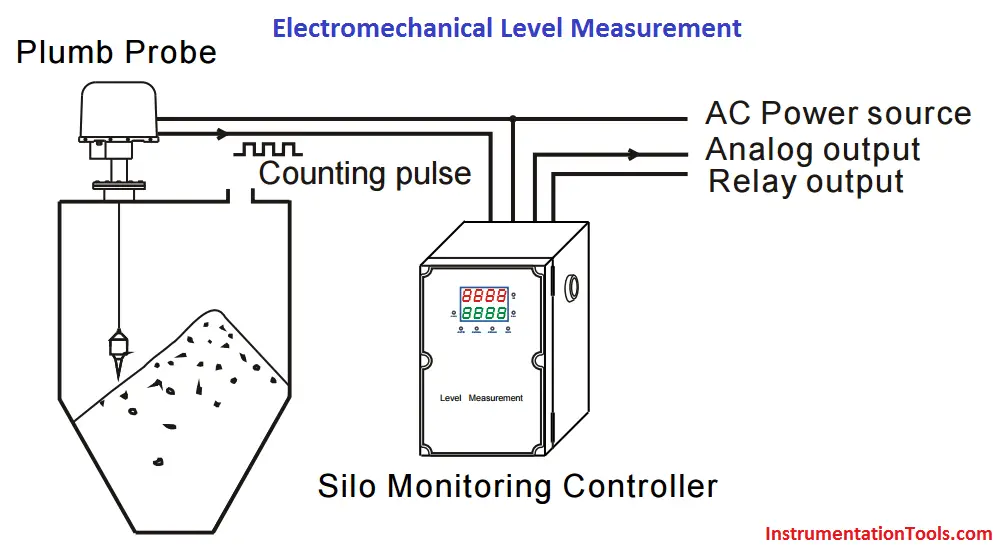Electromechanical level Measurement Principle
A sensing weight is let down on a measuring tape via a counter wheel. The tensile force of the weight is reduced as it hits the product surface. This is recognized, the direction of rotation of the motor reversed and the tape rewound.
As the sensing weight moves downwards, the revolutions of the wheel are counted using a non-contact method. Every count pulse corresponds to a defined length.
The level is obtained by subtracting this length from the overall length (tank height).

Measurement in bulk solids
Old seafarers used a weight on a rope to test the depth to the bottom of the sea. In industrial level measurement, the basic idea of sounding is still utilized in the electromechanical level system.
Where other measurement methods are limited, applications involving bulk solids predominantly use electromechanical level measurements.
Applications:
Open Telemetry is a framework for collecting data in cloud-native applications including tracing, metrics, and…
This article is about controlling the Pneumatic cylinder and Pneumatic motor in the assembly line…
In this post, we will learn the basic requirements for a network switch to be…
The PLC panel and MCC panel interface signals are start, stop, run feedback, trip, local…
In this article, we are going to discuss about shutter door control using induction motor…
Electrical Drives control the motion of electric motors. Motion control is required in industrial and…
View Comments
1-What is live zero n dead zero?
2- And what is the out put of flame detector?
3- IP -42, IP-62 what is it and where is the use?
4-what is the use of relay?
Hello Minesh, Plz search the website & Forum before posting your queries. I hope all answers available. Also i request you to post your further queries in our " Forum ". You can find the forum link from the above menu. If you dont get the answers then post your questions in the forum. Thanks
In Case of 4-20 mA, and 0-20 mA, we calls 4 mA is live Zero, and 0 mA for 0-20 mA is dead zero, but in both case 0-4 mA Instrument will be at 0% Position only.
For Flp detactor Output will be mV and that mV Conver through amplifiers signal conversion it's convert to 4-20 mA if the mounted in field for more Automation and electrical information you can visit us on http://www.itsoji.com